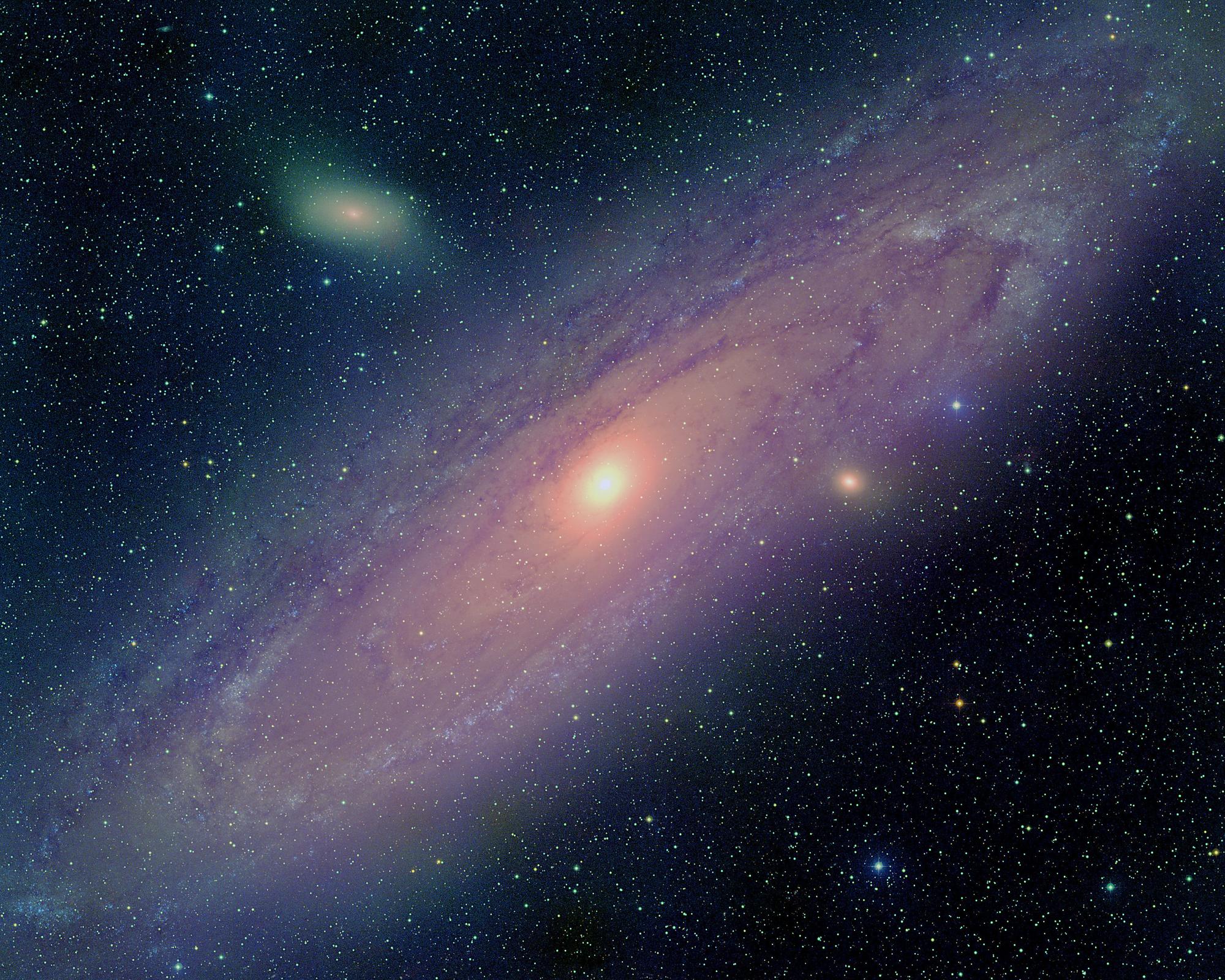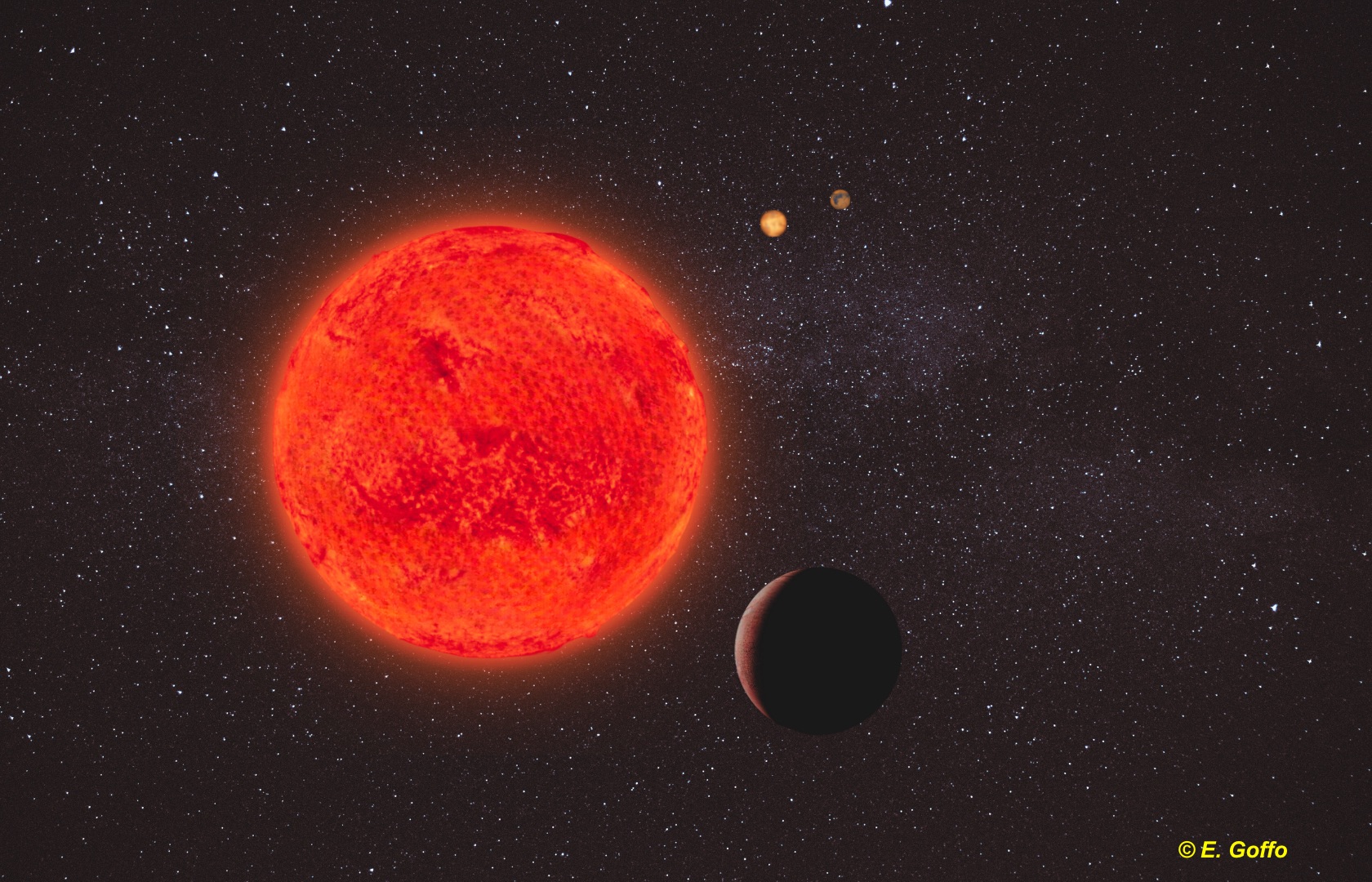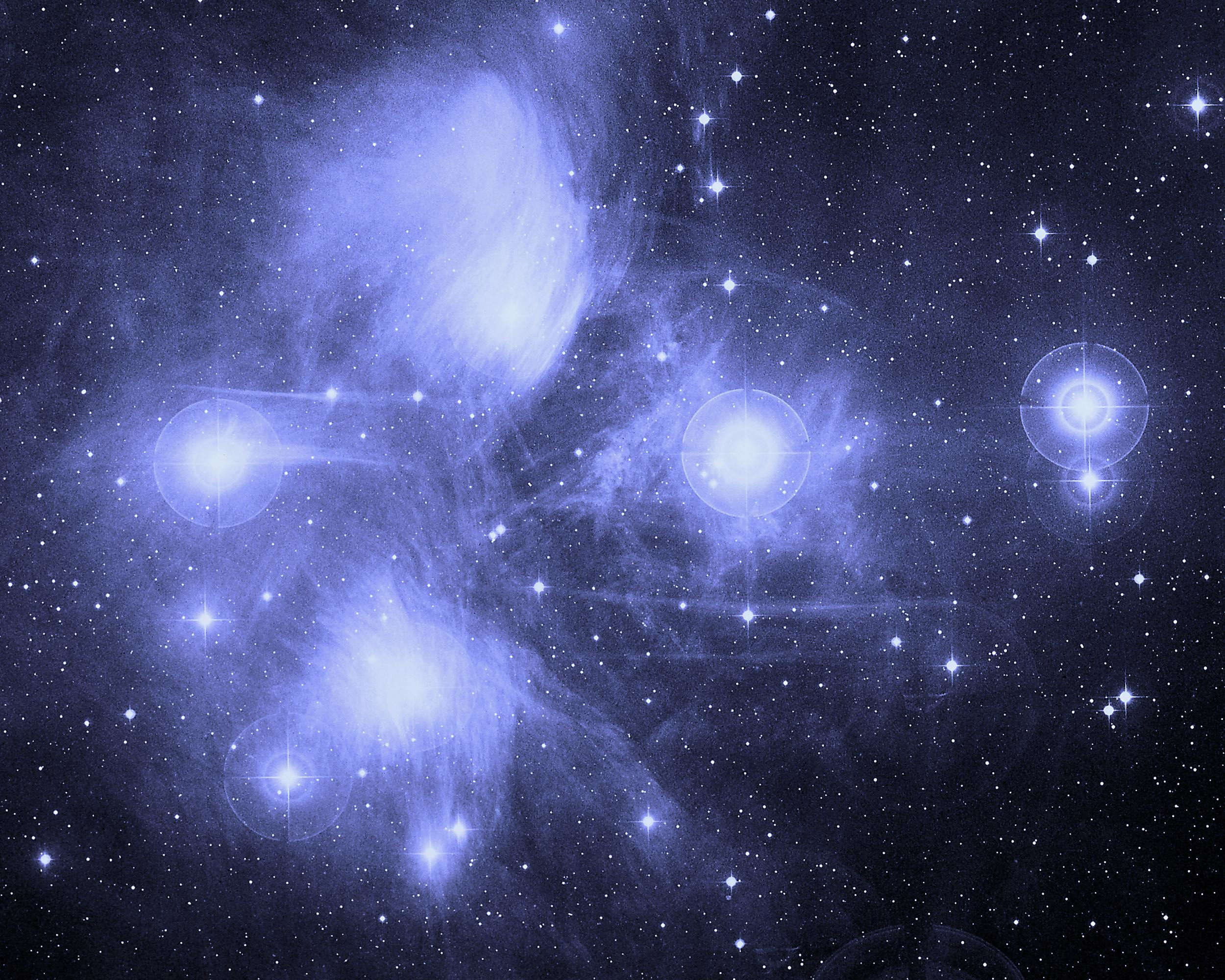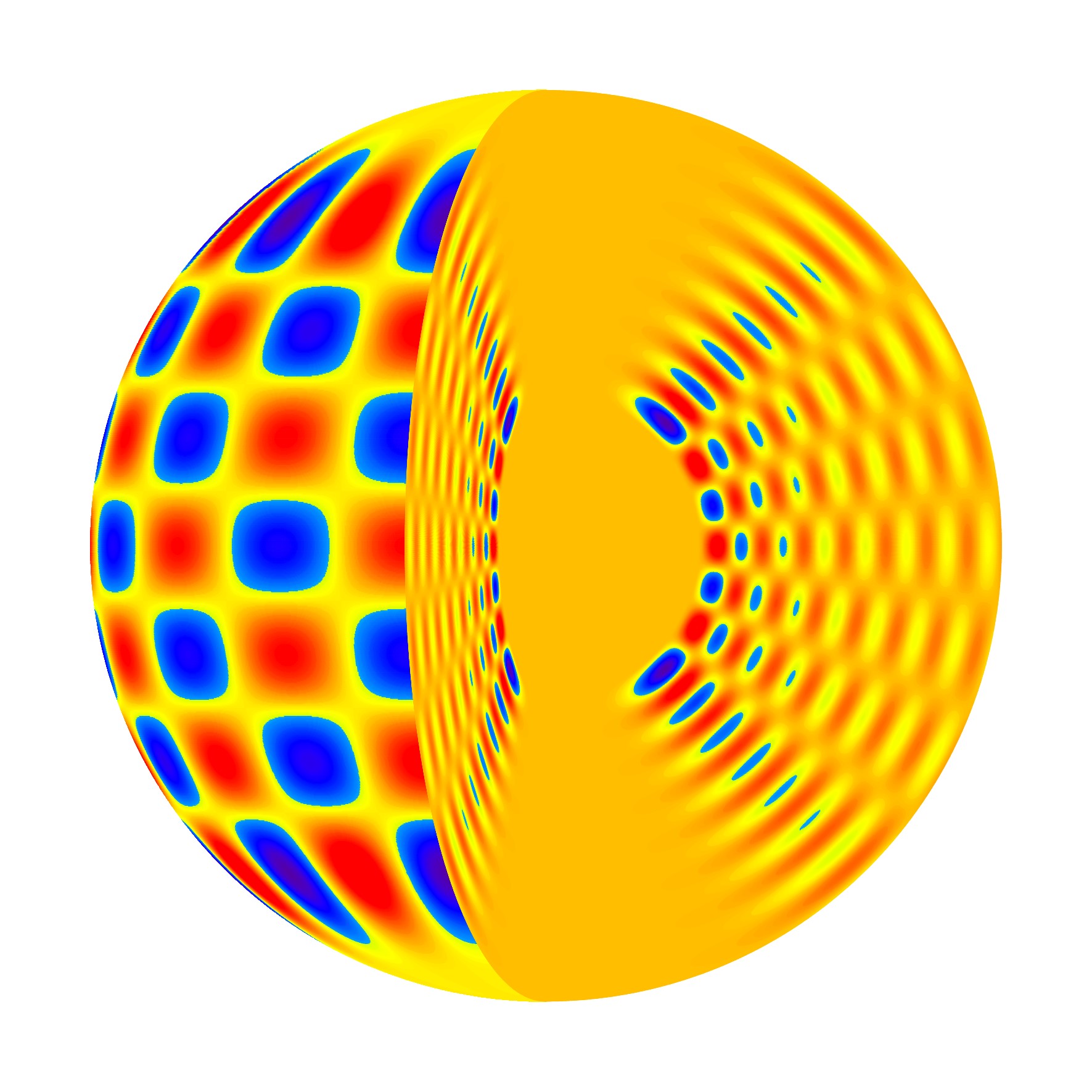
Extrasolar Planets
How unique is our solar system in our galaxy, the Milky Way?
How are planets actually formed? How common are extrasolar planets?
And what conditions must be present for life to arise on planets?
Astronomers at the Thuringian State Observatory have been studying
planets around stars other than the Sun for more than two decades.
These celestial bodies are referred to as extrasolar planets or exoplanets.

Researchers want to find out how planets are born – also to understand
how our solar system with the planets Mercury, Venus, Earth, Mars, Jupiter,
Saturn, and Neptune was formed. They also want to find out how many planets
there are in our galaxy where life could possibly develop.
Why is this important?
We humans are curious beings. Who hasn't looked up at the night sky and wondered how many stars and planets there are in the universe? And could it be that somewhere out there, other life exists? Astronomers explore how our solar system originated and why life has developed only on one planet, namely Earth. What can we learn from other planets about the future development of Earth?
We humans are curious beings. Who hasn't looked up at the night sky and wondered how many stars and planets there are in the universe? And could it be that somewhere out there, other life exists? Astronomers explore how our solar system originated and why life has developed only on one planet, namely Earth. What can we learn from other planets about the future development of Earth?
Star and Planet Formation
The space between stars is not empty but filled with finely distributed matter in the form of gas and dust. Nearby gas-dust clouds obscure our view of stars behind them and are visible as dark clouds in the Milky Way's band. These clouds can possess masses of up to many thousand solar masses and serve as the birthplaces of stars. Star formation occurs in unstable cloud regions that collapse under their own mass.
A continuous, initially minor rotation leads to the flattening of the collapsing region. Young stars are surrounded by gas-dust disks from which matter rains down onto them, leading to their growth. However, a fraction of this matter is ejected along the rotational axis at high speeds. These focused outflows, also known as jets, are caused by magnetic fields. When the outflowing gas encounters surrounding matter, both are excited to emit light. This allows for the identification of young stars even when they are still hidden within dark clouds.

Infrared and radio observations enable the direct study of protostars. These observations are conducted by astronomers at the Thüringer Landessternwarte and other observatories, as well as with the help of space telescopes. Most of the forming stars have masses similar to that of our Sun. In the surrounding disks, dust particles slowly clump together into larger chunks, eventually forming planets. The formation of stars and planets occurs together. The formation of planets, the influence of the wind, and the effect of the young star's radiation on the dust particles gradually dissolve the disk. However, the fragmentation of colliding asteroids replenishes the dust. In our solar system, this dust is evident as zodiacal light.
In star-forming regions where many young stars form star clusters, it can happen that the emerging stars compete for matter. Additionally, close encounters are common in such areas, leading to some objects leaving the region. Both processes result in the formation of very low-mass objects whose central temperatures and densities do not reach the values required for hydrogen fusion. These faint, failed stars are known as brown dwarfs. Using the 2-meter telescope, numerous brown dwarfs were found, their light variations were studied, and conclusions were drawn about their properties.
Asteroseismology
What is Asteroseismology?
Seismology deals with the generation and propagation of acoustic waves within the Earth and their detection on the Earth's surface. Asteroseismology applies this technique to study the inner structure of stars, using the pulsations excited in the stars.How Does Asteroseismology Work?
Density waves generated inside a star manifest as periodic brightness fluctuations or shifts in spectral lines on the star's surface. The visible oscillations depend on the mass and radius of the star, as well as the radial distribution of fundamental physical properties such as temperature, pressure, and density. Analysis of the occurring frequencies and amplitudes allows for conclusions about the inner structure of stars to be drawn. The created model must then be capable of reproducing the observed oscillations on the star's surface.
Asteroseismology - Contributions from Thüringer Landessternwarte.
For a precise analysis of their oscillations, stars must be continuously observed over an extended period. The observational gaps caused by the day/night rhythm are quite problematic. These gaps can be overcome by distributing observation stations around the Earth or by continuous observation using space telescopes. In an international collaboration, Thüringer Landessternwarte is primarily involved in high-resolution spectroscopy for the analysis of star pulsations, both in ground-based observation campaigns and in the use of satellite data.Examples include participation in the preparation and execution of the first European asteroseismological satellite mission, CoRoT, or the analysis of photometry data from the NASA Kepler satellite concerning pulsating stars as part of the Kepler Asteroseismic Science Consortium. Both missions provide highly accurate data on the brightness variations of thousands of stars, complemented by high-resolution star spectra from Tautenburg. The combination of photometric and spectroscopic data has led to new insights into a variety of pulsating stars, including Scuti and Cephei stars, Algol systems, rapidly oscillating Ap stars, and red giant stars.
Why Asteroseismology?
Our information about stars is derived from the light emitted from their surfaces. Stars are opaque, and we cannot peer into their interiors. Traditionally, models of a star's internal structure are created such that the energy generated in the star's core and transported to the surface precisely matches the observable external characteristics, such as the properties of the Sun's surface. Except for the Sun, the surface structure can only be roughly resolved for a few stars. Therefore, we rely on a few properties of the emitted light, such as brightness and color spectrum. Asteroseismology offers a completely new and independent way to create and verify models of a star's internal structure.Sun
The Sun is the star closest to us. It is the central star of our solar system and enables life on Earth.
Studying the Sun is scientifically interesting because it serves as a paradigm for other stars. The Sun has a variable magnetic field.
In the form of coronal mass ejections, this magnetic activity of the Sun can have harmful effects on technological facilities on Earth or in space.
Therefore, the development of instruments for monitoring the Sun and understanding the astrophysical processes that lead to a better understanding of the physics of solar activity inside and in the atmosphere are current research topics.


